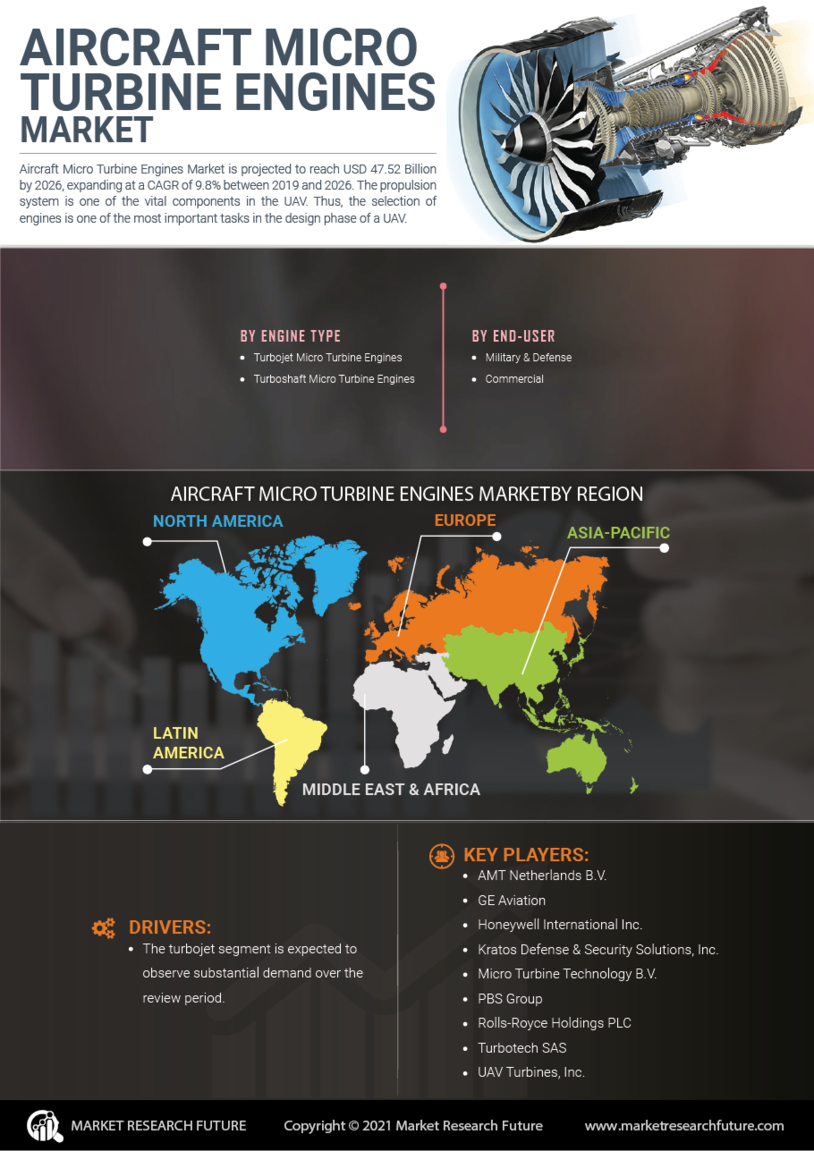Market Growth Projections
The Global Aircraft Micro Turbine Engine Market Industry is poised for substantial growth in the coming years. With projections indicating a market value of 2.24 USD Billion in 2024 and an anticipated increase to 4.76 USD Billion by 2035, the industry is expected to experience a compound annual growth rate (CAGR) of 7.08% from 2025 to 2035. This growth is driven by various factors, including technological advancements, regulatory support, and increasing demand for fuel-efficient solutions. The market dynamics suggest a favorable environment for innovation and investment, positioning micro turbine engines as a critical component of the future aviation landscape.
Growing Demand for Fuel Efficiency
The Global Aircraft Micro Turbine Engine Market Industry is witnessing an increasing demand for fuel-efficient engines. As airlines and private operators seek to reduce operational costs, micro turbine engines, known for their high efficiency and low fuel consumption, are becoming more appealing. This trend is particularly pronounced in the light aircraft segment, where micro turbines can significantly enhance performance. The market is projected to reach 2.24 USD Billion in 2024, reflecting a shift towards sustainable aviation solutions. This growing emphasis on fuel efficiency aligns with global environmental goals, potentially driving further innovation in micro turbine technology.
Rising Popularity of Urban Air Mobility
The concept of urban air mobility is gaining traction, which could significantly impact the Global Aircraft Micro Turbine Engine Market Industry. As cities explore innovative transportation solutions, micro turbine engines are well-suited for the emerging electric vertical takeoff and landing (eVTOL) aircraft. These engines offer a compact design and lightweight characteristics, making them ideal for urban air mobility applications. The potential for rapid deployment and operational efficiency positions micro turbines as a key player in this evolving market. As urban air mobility initiatives expand, the demand for micro turbine engines is likely to increase, driving market growth.
Increased Investment in General Aviation
Investment in general aviation is on the rise, contributing positively to the Global Aircraft Micro Turbine Engine Market Industry. As more individuals and businesses recognize the benefits of private air travel, the demand for light aircraft equipped with micro turbine engines is expected to grow. This segment is particularly attractive due to its versatility and operational cost-effectiveness. The projected compound annual growth rate (CAGR) of 7.08% from 2025 to 2035 indicates a robust market outlook. Increased investment in general aviation infrastructure and services further supports this trend, creating opportunities for manufacturers and suppliers in the micro turbine engine sector.
Regulatory Support for Sustainable Aviation
Regulatory frameworks are increasingly favoring sustainable aviation technologies, which is beneficial for the Global Aircraft Micro Turbine Engine Market Industry. Governments worldwide are implementing stricter emissions regulations and providing incentives for the adoption of cleaner technologies. This regulatory support encourages manufacturers to innovate and develop micro turbine engines that meet or exceed these standards. As a result, the market is expected to grow, potentially reaching 4.76 USD Billion by 2035. The alignment of regulatory policies with industry goals fosters a conducive environment for the development and deployment of micro turbine engines in various aviation applications.
Technological Advancements in Engine Design
Technological advancements are playing a pivotal role in the Global Aircraft Micro Turbine Engine Market Industry. Innovations in materials and manufacturing processes are leading to lighter, more durable engines that can operate at higher temperatures and pressures. These advancements not only improve performance but also extend the lifespan of the engines. For instance, the integration of advanced composites and additive manufacturing techniques is enabling the production of more efficient turbine components. As these technologies continue to evolve, they are likely to attract investment and interest, further propelling market growth and enhancing the competitive landscape.

















Leave a Comment